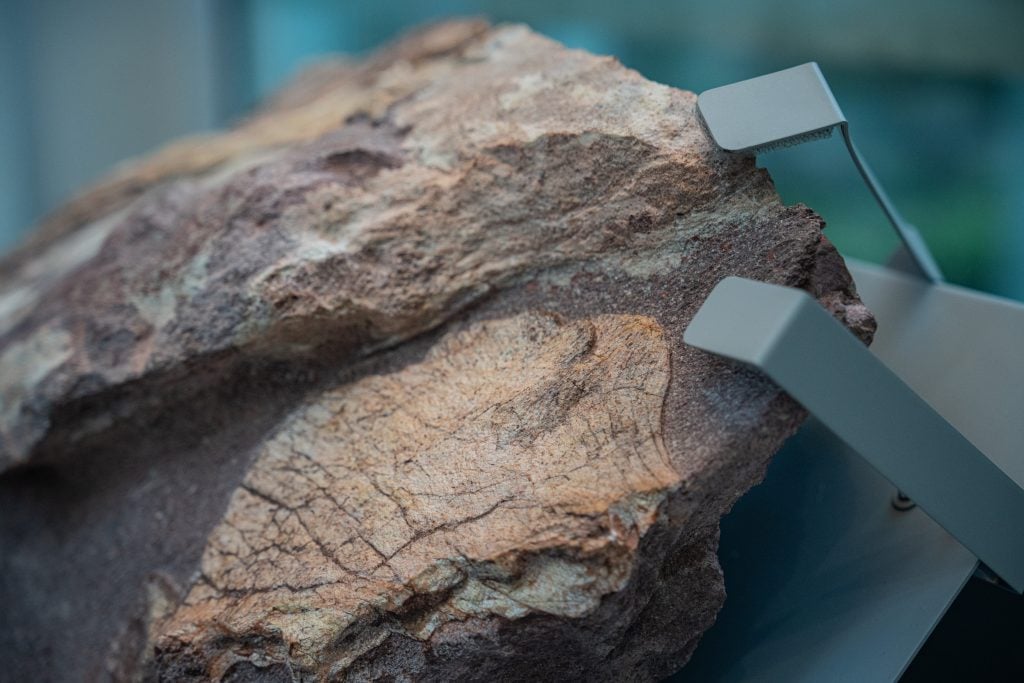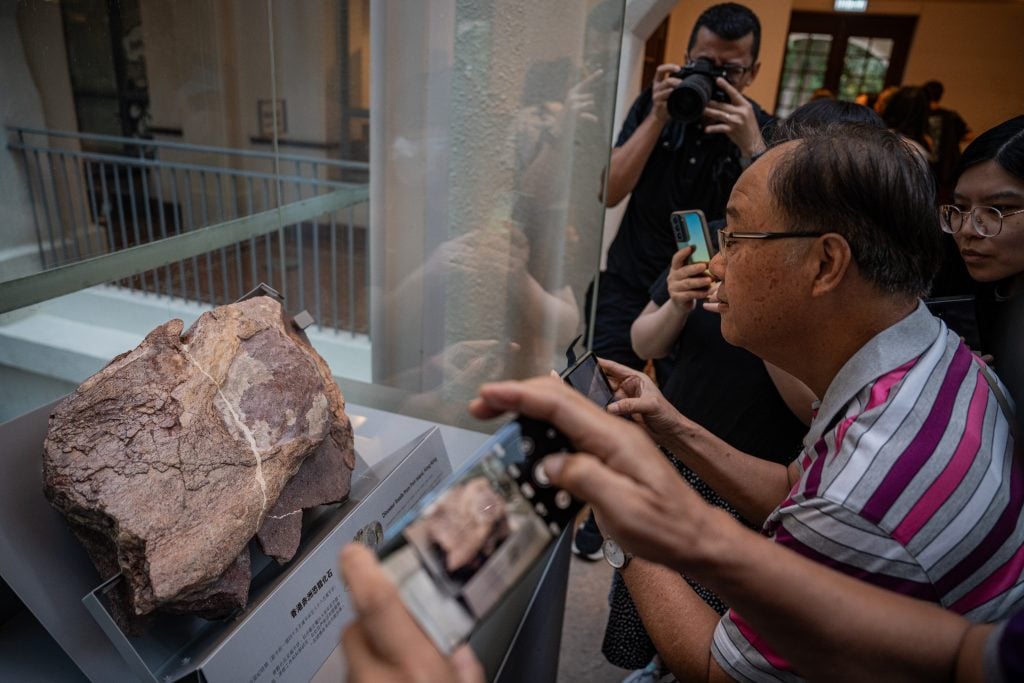Archaeology & History
First Dinosaur Fossils Unearthed in Hong Kong Make Their Museum Debut
Further research is necessary to determine what kind of dinosaur the fossils originally belonged to.

It’s one thing to find fossils in a remote field, sandwiched between millennia-old mountains and dried up riverbeds, and quite another to find them in the midst of sprawling, hypermodern concrete jungles like Hong Kong, which boasts a population of more than seven million people.
However, that’s exactly what happened earlier this week, when archaeologists unearthed a collection of dinosaur bones on Chek Chau, a 689 acre island in the Tolo Channel, just off the coast of the Chinese megacity.
A first for Hong Kong, which has long been a center of paleontological research but had yet to witness a discovery on its own turf, the fossils have been put on display at the Hong Kong Heritage Discovery Centre in Tsim Sha Tsui, one of the city’s largest and busiest shopping districts, soon to be joined by a workshop where visitors can learn how fossils are preserved and studied.

Close-up of the fossils. Photo: Man Hei Leung/Anadolu via Getty Images.
Despite all the online and in-person fanfare, researchers have yet to figure out to what kind of dinosaur the bones originally belonged. Until representatives of the Chinese Institute of Vertebrate Paleontology and Paleoanthropology return with more answers, all we can say about the creature is that it was a large vertebrate, and lived sometime between 145 to 66 million years ago during the Cretaceous period.
Compared to other parts of China, such as the Chengjiang Fossil Site in Yunnan Province or the Dashanpu Middle Jurassic Dinosaur Fossils Site in Sichuan, the Hong Kong area isn’t known for its fossil finds. Not because dinosaurs didn’t live here, but because environmental conditions didn’t allow for their fossilization.
As Michael Pittman, a professor of paleontology at the Chinese University of Hong Kong, told the Guardian, “Hong Kong is famous for being a built-up landscape, but half of it is country park. In the countryside areas most of what you see are dinosaur-era rocks, but it’s volcanic rocks—and they are bad places to find fossils because fossils just melt.”

The fossils on display at the Hong Kong Heritage Discovery Center. Photo: Man Hei Leung/Anadolu via Getty Images.
Chek Chau, also known as Port Island, is a different story, as its sediment layers and rock formations are nothing like you find on the nearby mainland. It was for this reason that the city’s Agriculture, Fisheries and Conservation Department identified the site as a prime location for fossil hunters earlier this year, prompting archaeologists to investigate.
A government statement shared with the Guardian suspects that the fossils found in Chek Chau’s UNESCO Global Geopark were originally buried beneath sand and gravel before partially resurfacing after a large flood, facilitating their eventual discovery.
While these are the first dinosaur fossils to be found in Hong Kong, they aren’t the first fossils. As early as 1980, archaeologists surveying the northern coast of the Tolo Channel stumbled upon the remains of placoderms: large, armored, jawed fish that ruled the world’s oceans for much of the Silurian and Devonian periods, long before the arrival of dinosaurs.
Excited by the discovery of dinosaur fossils, the Chinese government has reportedly commissioned experts to conduct additional field surveys in the Hong Kong area, meaning that more remains may yet show up in the near future.





